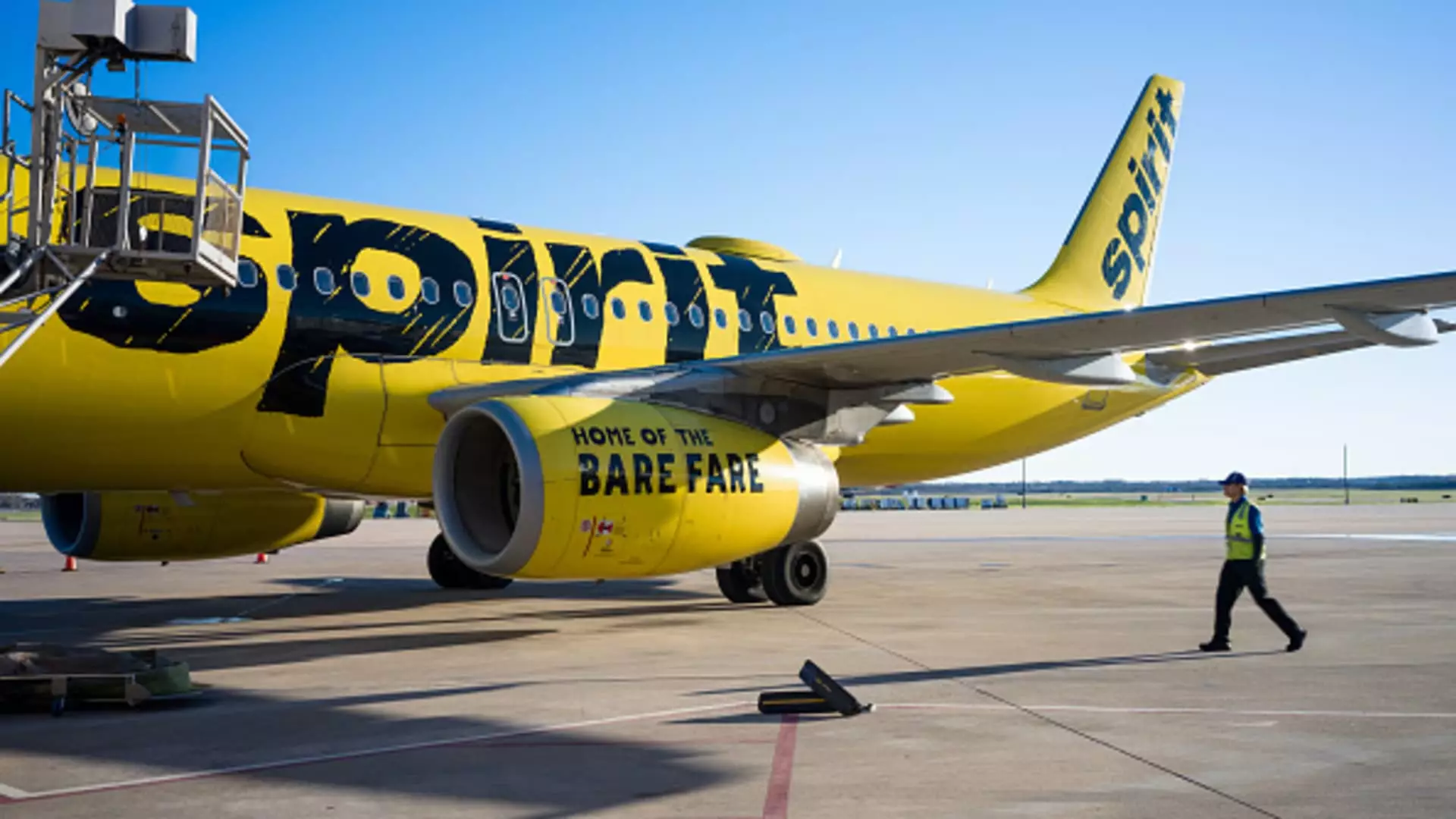Spirit Airlines finds itself in a precarious financial situation as it grapples with severe liquidity challenges and high levels of debt. On Friday, the company announced a significant extension of its debt refinancing timeline, pushing the deadline to December—an urgent move made just hours before the original deadline was set to expire. This decision reflects the dire straits in which the airline currently operates, revealing a company that is not only in need of immediate financial relief but also scrambling to appease concerned creditors.
The airline disclosed that it had drawn down its entire $300 million revolving credit facility earlier in the week and expects to finish the calendar year with a liquidity figure just above $1 billion. However, this temporary cash influx may not alleviate the deeper issues at play, particularly concerning the obligations of its senior secured notes set to mature in 2025 and convertible senior notes due in 2026. The continuing discourse with these creditors is crucial, given that Spirit’s current financial structure is not sustainable without negotiated solutions.
The market’s response to Spirit Airlines’ precarious position has been overwhelmingly negative. Following the latest announcement, the airline’s stock plummeted to another record low, closing at under $1.50 per share—a staggering decline of about 90% over the year. This drop illustrates investor sentiment, which has soured dramatically amid growing concerns about the airline’s viability and ability to navigate ongoing economic pressures. Coupled with a lack of expected bookings and a mounting list of operational woes—including numerous employee furloughs, significant flight schedule reductions, and delayed aircraft deliveries—the outlook remains bleak.
Market analysts have expressed skepticism about Spirit’s ability to regain stability. The loss of confidence among investors intensified after a federal judge blocked the airline’s planned acquisition by JetBlue Airways on antitrust grounds, further complicating Spirit’s strategic maneuvers for growth and recovery.
Spirit Airlines has faced additional operational challenges, notably related to a significant Pratt & Whitney engine recall, which has led to the grounding of many planes in its fleet. This has severely impacted flight availability and overall customer satisfaction, which are critical elements for any airline seeking to emerge from a financial crisis. The repercussions of such operational disruptions cannot be underestimated as they contribute to a detrimental cycle of reduced revenue and increasing operational costs.
As the year progresses, the outlook for Spirit Airlines remains fraught with challenges. Analysts are increasingly contemplating the potential for a bankruptcy filing, as the carrier continues to explore all options to stabilize its financial standing. The aviation sector is notoriously volatile, and without dramatic shifts in market conditions or a successful restructuring of its debt, Spirit Airlines could find itself facing an uncertain future.
Spirit Airlines stands at a crossroads, burdened by debt, operational hiccups, and an uncertain market landscape that threaten its existence. The forthcoming months will be critical as the airline seeks both to refinance its debts and to bolster its operational capabilities amidst a continually shifting economic environment.

